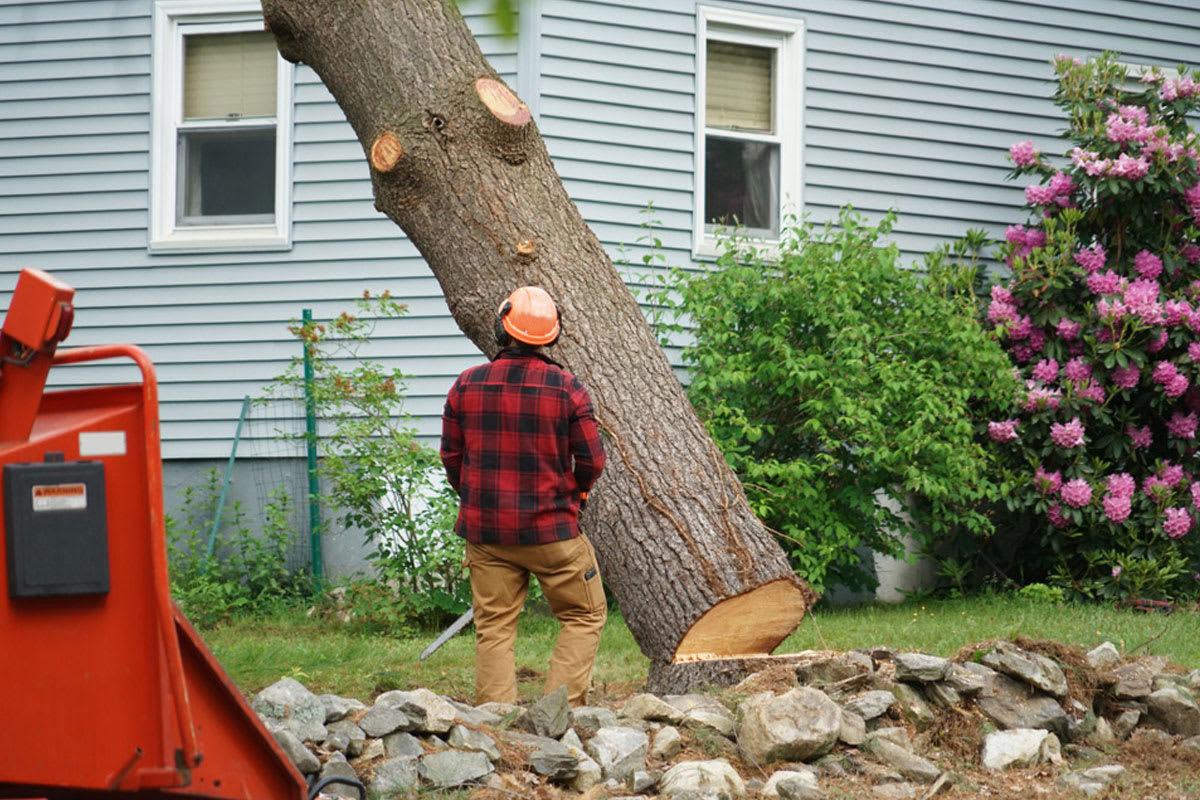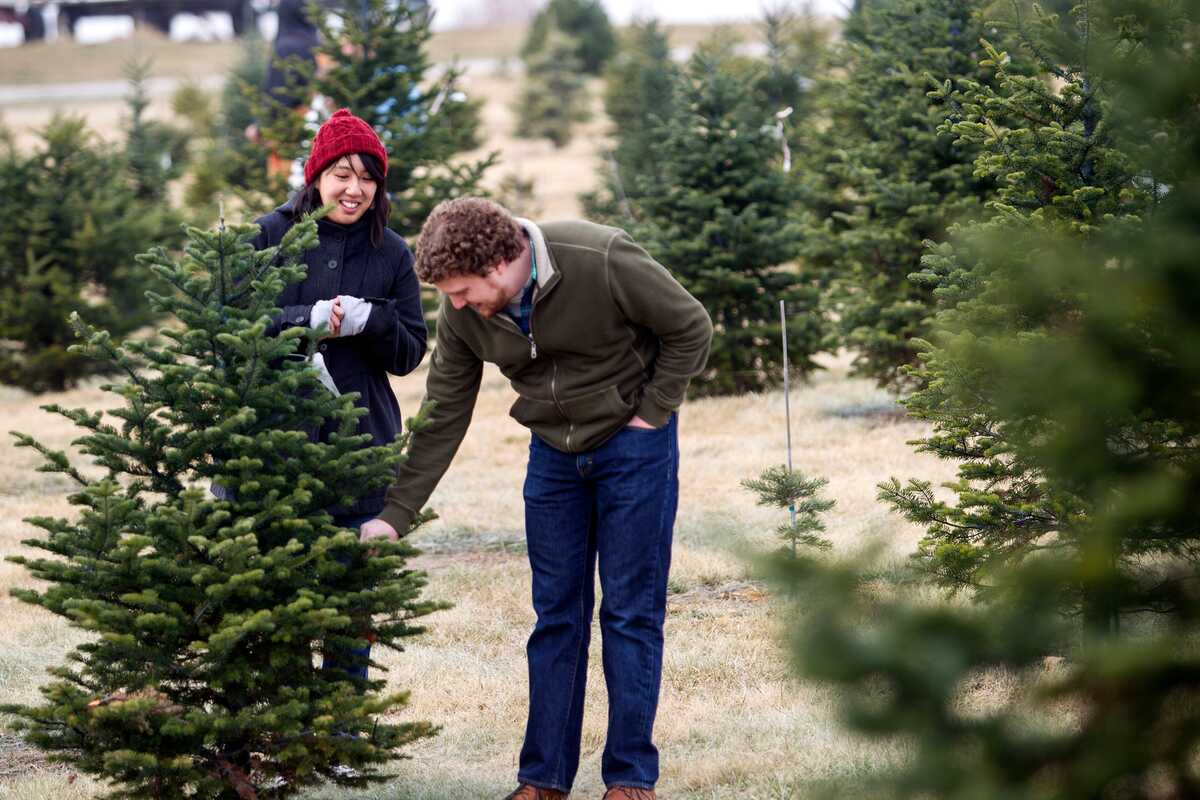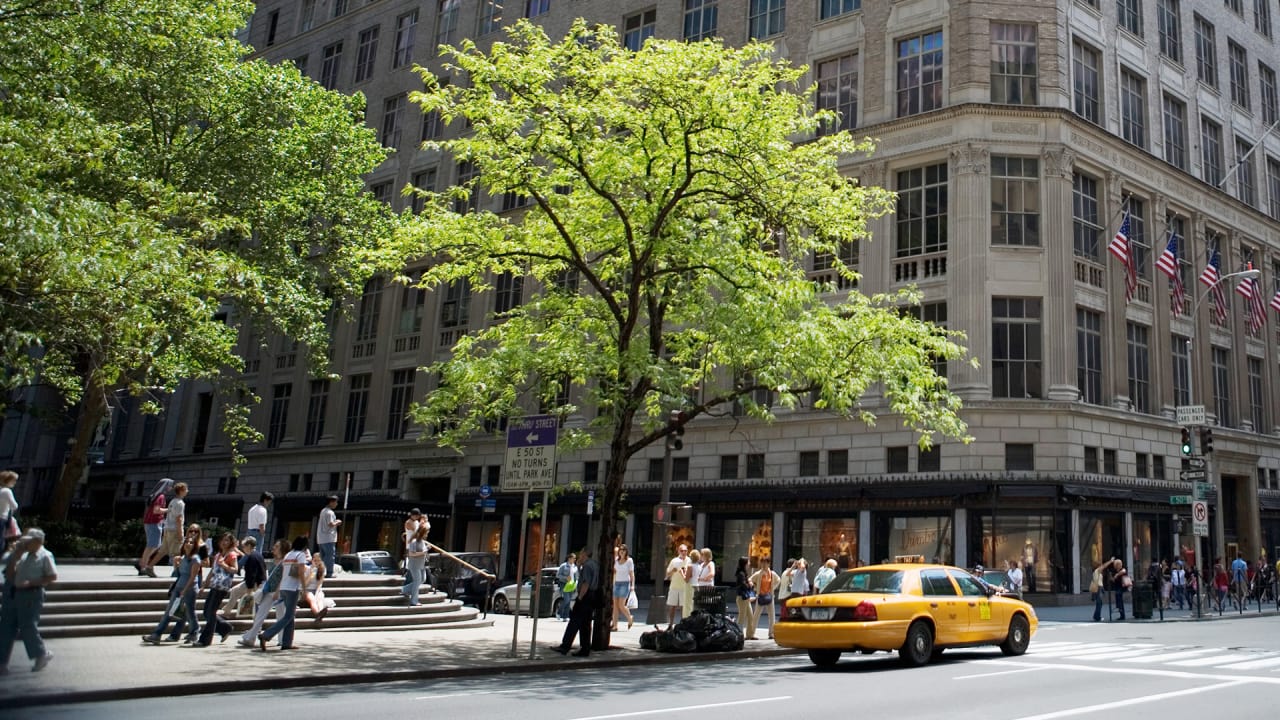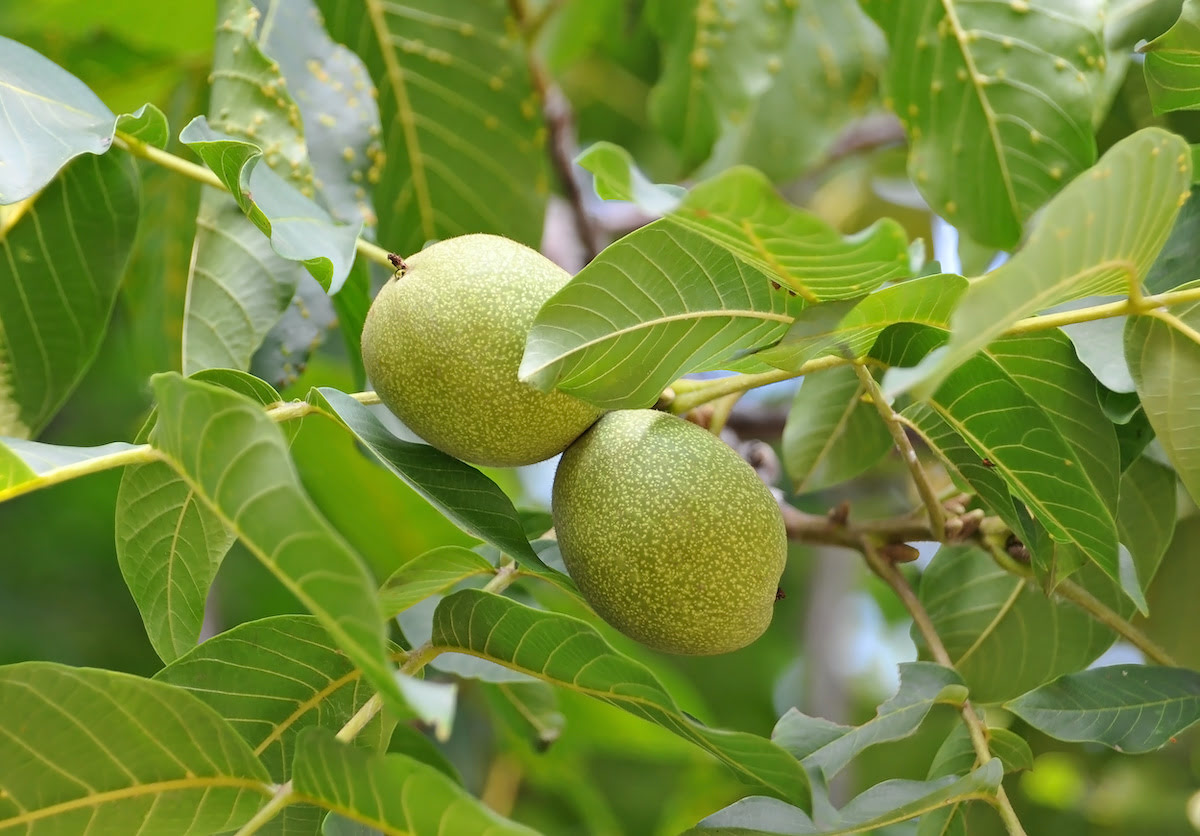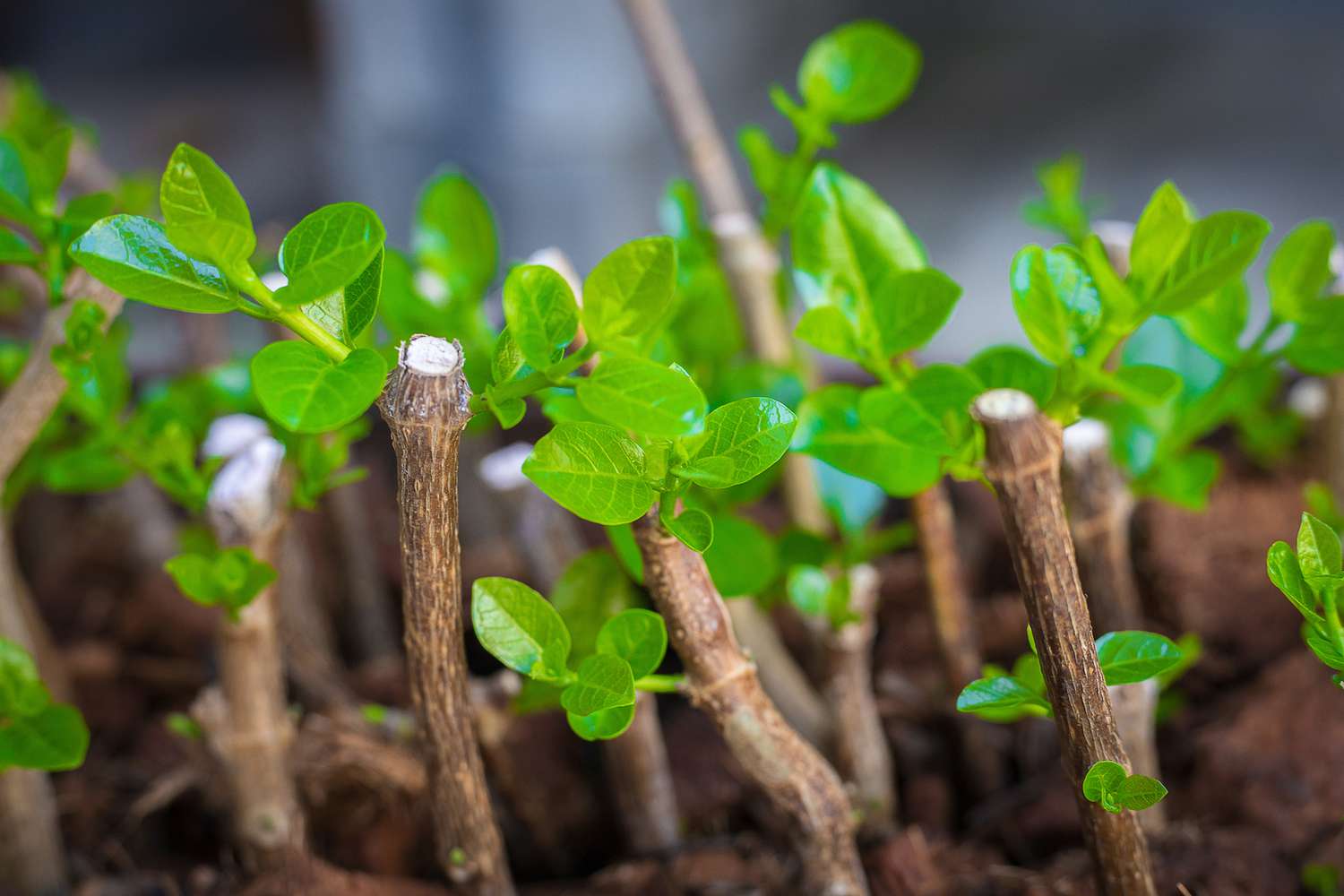Home>Gardening News and Trends>Latest News>Person Who Cuts Down Trees
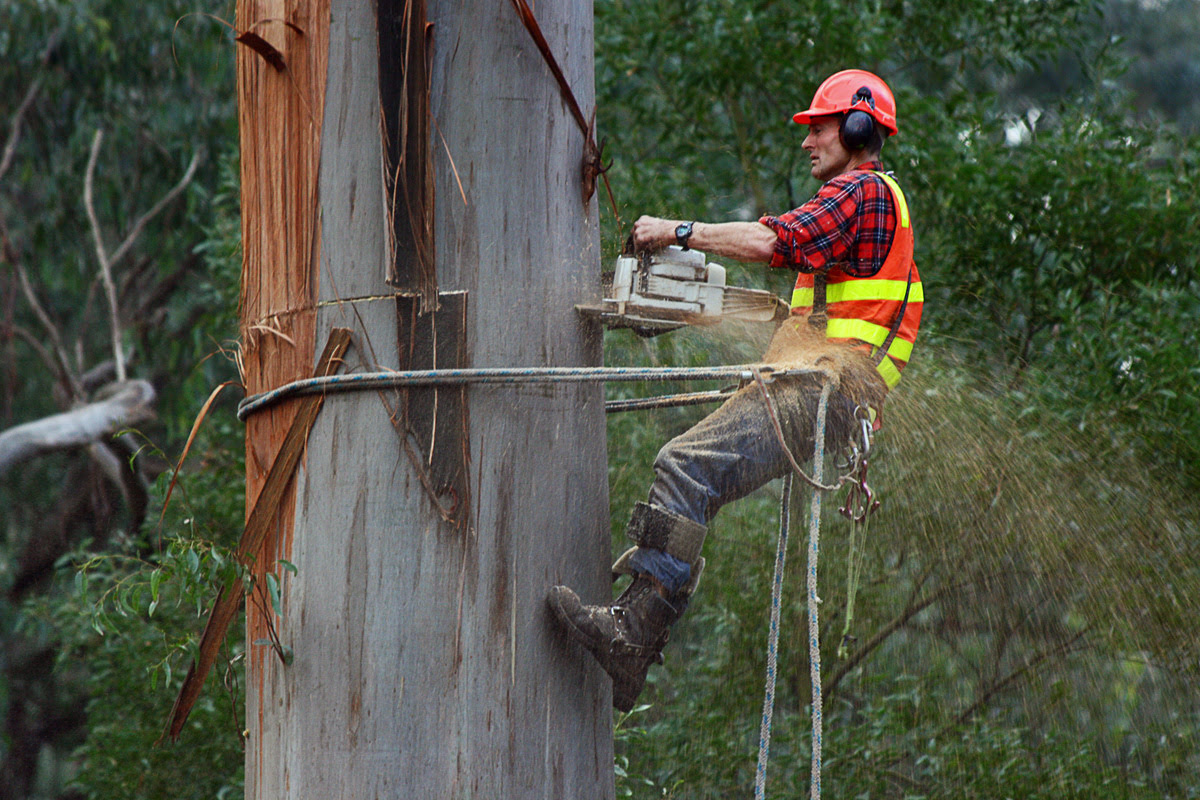

Latest News
Person Who Cuts Down Trees
Modified: January 22, 2024
Get the Latest News on the Person Who Cuts Down Trees. Stay updated with the latest updates, events, and stories surrounding this profession.
(Many of the links in this article redirect to a specific reviewed product. Your purchase of these products through affiliate links helps to generate commission for Chicagolandgardening.com, at no extra cost. Learn more)
Table of Contents
Introduction
Welcome to the world of tree cutting – a profession that requires skill, precision, and a deep understanding of nature. Tree cutters play a crucial role in maintaining the balance between urban development and the preservation of green spaces. As cities expand and landscapes change, tree cutters are tasked with carefully removing trees that pose a threat or hinder progress. This article explores the responsibilities, skills, and tools involved in the art of tree cutting.
At first glance, tree cutting may seem like a straightforward task, but it is far more complex than it appears. Tree cutters are not mere lumberjacks swinging axes; they are highly trained professionals equipped with specialized knowledge and expertise. Utilizing their skills, they ensure that trees are removed safely and efficiently, while considering the impact on the surrounding environment.
Tree cutters possess a deep understanding of tree biology, allowing them to identify hazardous trees and assess their structural integrity. This knowledge is crucial in determining the best approach for removing a tree without causing damage to nearby structures or endangering human lives.
In addition to their technical expertise, tree cutters often work in challenging conditions, such as extreme weather or precarious locations. They must be adaptable and quick-thinking, able to analyze various scenarios and select the most suitable technique for each unique tree cutting situation.
As stewards of the environment, tree cutters are also conscious of the ecological impact of their work. They strive to minimize disruption to ecosystems, sometimes opting for tree transplants or other preservation methods when possible. To achieve this delicate balance, tree cutters collaborate with arborists, land developers, and city planners to ensure that tree removal decisions align with sustainable practices.
Throughout this article, we will delve deeper into the role of tree cutters, exploring their skills, qualifications, the equipment they use, different cutting techniques, safety precautions, and the environmental impact of their work. So, let’s strap on our safety gear and embark on this enlightening journey into the world of tree cutting!
The Role of a Tree Cutter
The role of a tree cutter extends beyond simply cutting down trees. Tree cutters are responsible for the careful assessment and removal of trees to ensure the safety of people and property. Their expertise is crucial in maintaining the health and aesthetics of urban and natural environments.
One of the primary responsibilities of a tree cutter is to identify trees that pose a potential risk. This includes trees that are structurally compromised, diseased, leaning dangerously, or in close proximity to power lines, buildings, or roads. By identifying these hazardous trees, tree cutters help prevent accidents, property damage, and power outages.
Once a hazardous tree has been identified, the tree cutter will determine the most appropriate method for its removal. This can involve climbing the tree using specialized equipment or utilizing cranes and other heavy machinery for larger and more complex trees. The tree cutter carefully plans and executes the removal process, taking into consideration factors such as the tree’s location, surrounding structures, and potential obstacles.
In addition to tree removal, tree cutters are often involved in tree pruning and trimming. Pruning helps maintain the health and appearance of trees, promoting better structural integrity and reducing the risk of limb failure. Tree cutters have a keen eye for identifying the right branches to trim and the appropriate pruning techniques to use to ensure healthy growth.
Furthermore, tree cutters play a vital role in tree preservation and conservation efforts. While their work may involve cutting down trees, they also collaborate with arborists and local authorities to determine alternative solutions whenever possible. This can include tree transplanting, where a tree is carefully uprooted and relocated to a different location.
Overall, the role of a tree cutter is multifaceted and requires a combination of technical knowledge, practical skills, and an understanding of environmental impact. Tree cutters are essential members of the community, ensuring the safety of individuals, maintaining the aesthetics of landscapes, and contributing to the overall health and welfare of our environment.
Skills and Qualifications
Being a tree cutter requires a unique skill set and a combination of physical abilities, technical expertise, and qualifications. Let’s explore the key skills and qualifications necessary to excel in this profession.
Knowledge of Tree Biology: Tree cutters need a deep understanding of tree biology to assess the health and structural integrity of trees. This knowledge enables them to identify signs of disease, decay, or instability and determine the appropriate course of action.
Technical Expertise: Tree cutters must be proficient in various cutting techniques, including methods for safely felling trees, pruning branches, and shaping tree canopies. They require knowledge of different tree species and their specific growth patterns to ensure effective and efficient tree cutting.
Physical Fitness: The work of a tree cutter is physically demanding. Climbing trees, operating heavy machinery, and carrying equipment require strength, agility, and endurance. Tree cutters should maintain good overall physical fitness to perform their tasks effectively and minimize the risk of injuries.
Problem-Solving Skills: Tree cutters often encounter complex situations that require quick thinking and problem-solving abilities. They must assess the best approach for removing a tree, considering the surrounding environment, potential hazards, and equipment limitations.
Attention to Safety: Safety is paramount in the profession of tree cutting. Tree cutters need to be diligent about following safety protocols, wearing appropriate protective gear, and implementing safety measures to mitigate risks and protect themselves and others during tree cutting operations.
Certifications and Training: Many tree cutters acquire certifications such as the International Society of Arboriculture (ISA) Certified Arborist or Tree Worker designation. These certifications demonstrate a high level of competence and adherence to industry standards. Additionally, completing relevant training programs and courses in tree cutting techniques and safety is essential.
Experience: Experience plays a significant role in the development of a tree cutter’s skills. Working under the guidance of experienced professionals helps tree cutters refine their techniques, learn best practices, and face real-world challenges. Building a portfolio of successfully completed projects can also enhance credibility in the field.
Tree cutters continuously enhance their skills and knowledge through ongoing professional development, keeping up with industry advancements, and staying informed about the latest cutting techniques and safety standards. By combining these skills and qualifications, tree cutters are well-equipped to perform their duties competently and deliver high-quality tree cutting services.
Equipment and Tools
To efficiently and safely carry out their work, tree cutters rely on a variety of specialized equipment and tools. From chainsaws to harnesses, let’s explore the essential equipment used by tree cutters.
Chainsaws: Chainsaws are the primary tools of the trade for tree cutters. These powerful machines are used for cutting through tree trunks and branches. Tree cutters often have a selection of chainsaws with different bar lengths to accommodate trees of varying sizes and types.
Protective Gear: Safety is crucial for tree cutters, and protective gear plays a vital role in safeguarding them during tree cutting operations. This includes helmets, face shields, ear protection, gloves, and chainsaw-resistant clothing. Safety harnesses are also necessary for climbing trees or working at heights.
Rigging Equipment: Rigging equipment is used when tree cutters need to safely remove heavy tree branches or sections without causing damage to surrounding structures. This includes slings, pulleys, carabiners, and ropes. By employing proper rigging techniques, tree cutters can lower large pieces of wood safely to the ground.
Climbing Gear: Tree cutters often need to access trees by climbing. Climbing gear comprises climbing ropes, tree saddles, and climbing spikes, known as “spurs” or “spikes,” which are strapped to the tree wearer’s boots to facilitate climbing. Climbing gear allows tree cutters to maneuver in the tree’s canopy safely.
Stump Grinders: After removing a tree, tree cutters may use stump grinders to eliminate the remaining stump. Stump grinders are powerful machines with rotating cutting wheels that grind the stump into small wood chips, allowing for easy removal and landscaping.
Chippers: Chippers are used to process the branches and smaller sections of a tree into wood chips. These machines can quickly and efficiently convert tree debris into mulch, which can be reused in landscaping projects or disposed of responsibly.
Ladders and Lifts: For trees that are not easily accessible by climbing or require a more stable working platform, tree cutters use ladders or mechanical lifts. These enable them to reach higher branches or navigate around obstacles safely.
Hand Tools: Various hand tools are employed by tree cutters for tasks such as pruning, trimming, and cutting smaller branches. These tools include hand saws, pole pruners, loppers, and pruning shears. Hand tools provide precision and control when working on detailed or delicate tasks.
It is important for tree cutters to maintain their equipment regularly to ensure optimal performance and safety. Dull chainsaws, worn-out ropes, or faulty harnesses can compromise the effectiveness and safety of tree cutting operations. Therefore, tree cutters prioritize proper maintenance and regular inspections of their equipment.
By utilizing these specialized tools and equipment, tree cutters can carry out their work with precision and efficiency, ensuring the safe removal of trees while minimizing any impact on the surrounding environment.
Techniques for Cutting Down Trees
Cutting down a tree requires careful planning and the use of appropriate techniques to ensure the safety of the tree cutter and the surrounding environment. Tree cutters employ various methods depending on factors such as tree size, location, and surrounding structures. Let’s explore some of the common techniques used for cutting down trees.
Felling: Felling is the technique of cutting down a tree at its base and allowing it to fall in a specific direction. This method is commonly used for trees that have ample open space around them, allowing for a controlled and safe descent. Tree cutters typically make a precise undercut on the side of the tree facing the desired falling direction. Then, using a backcut on the opposite side, they carefully guide the tree’s fall to the intended spot.
Directional Felling: Directional felling is a technique used when there is limited space for a tree to fall freely. Tree cutters employ a combination of felling cuts, wedges, and ropes to control the direction and speed of the tree’s fall. By strategically placing wedges and using ropes to pull the tree in the desired direction, tree cutters can ensure a safe and controlled descent.
Climbing and Dismantling: For trees located near structures or in confined spaces, tree cutters may opt for climbing and dismantling the tree. This technique involves climbing the tree using ropes and harnesses while progressively removing branches and sections from the top down. By dismantling the tree in smaller, manageable pieces, tree cutters can safely lower them to the ground without causing damage or risking injury.
Cranes and Heavy Machinery: In cases where trees are too large or pose a risk if cut conventionally, tree cutters may utilize cranes or other heavy machinery. This enables them to remove large sections or entire trees with precision and control. Cranes can reach high elevations, making it possible to remove trees that are difficult to access or pose a danger to nearby structures.
Tree Transplanting: In situations where preservation is prioritized, tree cutters can employ tree transplanting techniques. Instead of cutting down the tree, it is carefully uprooted, preserving its root system, and then relocated to a different area. This technique is used when a development project requires the preservation of mature trees or when a tree’s value outweighs the need for removal.
Regardless of the cutting technique employed, tree cutters plan their actions meticulously. They assess the tree’s condition, surrounding environment, potential hazards, and desired outcome before determining the most suitable cutting technique. Safety is always the top priority, ensuring the protection of people, property, and the tree cutter themselves.
Tree cutters continually refine their cutting techniques through experience and ongoing professional development. This allows them to adapt to different tree cutting scenarios and deliver optimal results while minimizing any adverse effects on the environment.
Safety Precautions
Tree cutting is a high-risk profession, and as such, tree cutters prioritize safety at all times. They adhere to strict safety protocols and take numerous precautions to minimize the risk of accidents and injuries. Let’s delve into some of the important safety measures taken by tree cutters.
Proper Personal Protective Equipment (PPE): Tree cutters wear specialized personal protective equipment (PPE) to protect themselves from potential hazards. This typically includes hard hats, safety glasses or face shields, ear protection, gloves, chainsaw-resistant clothing, and safety boots. PPE helps safeguard tree cutters from falling debris, sawdust, and other potential risks.
Equipment Inspection and Maintenance: Before starting any work, tree cutters conduct thorough inspections of their equipment to ensure it is in proper working condition. Regular maintenance and repair of tools and machinery, such as chainsaws and ropes, is crucial for optimal safety and performance. This includes sharpening chainsaws, lubricating moving parts, and checking ropes for any signs of wear or damage.
Safe Work Practices: Tree cutters follow a set of established safe work practices to minimize risks. This includes maintaining clear communication among team members, setting up safety zones, and adhering to established signaling systems. They take precautions to avoid working during adverse weather conditions, such as high winds or lightning storms, to mitigate the dangers associated with unstable trees or falling branches.
Climbing and Rigging Safety: Tree cutters who climb trees or utilize rigging techniques undergo specialized training to ensure they understand and apply the appropriate safety procedures. This includes the correct use of climbing ropes, harnesses, and safety lanyards while working at heights. Tree cutters also follow rigging protocols to control and lower heavy branches or tree sections safely.
Proper Tree Inspection: Before commencing any cutting operations, tree cutters carefully assess the tree’s condition and surrounding environment. They look for signs of instability, disease, or pests that may pose a safety hazard. This evaluation helps tree cutters determine the best cutting technique, as well as any necessary precautions to avoid accidents.
Collaboration and Planning: Tree cutters work closely with their team members and collaborate with other professionals, such as arborists and utility companies, to ensure a coordinated and safe work environment. This includes communicating about potentially hazardous trees, overhead power lines, or other factors that may impact the safety of the cutting operation.
Continuous Training and Education: Safety practices and techniques are constantly evolving, and tree cutters stay updated by participating in regular training and continuing education programs. This helps them stay informed about industry best practices, new safety technologies, and emerging hazards, allowing them to adapt and implement the latest safety measures.
By prioritizing safety precautions, tree cutters can successfully navigate the inherent risks associated with their profession. These measures not only protect the tree cutters themselves but also ensure the safety of others in the vicinity and help to prevent accidents and property damage.
Environmental Impact
Tree cutting, by its nature, has an impact on the environment. However, tree cutters are conscious of the importance of preserving and mitigating this impact as much as possible. They strive to find a balance between the need to remove trees for safety or development purposes and the benefits that trees provide to the ecosystem. Let’s explore the environmental impact of tree cutting and the measures taken to minimize it.
Ecological Considerations: Tree cutters understand the ecological value of trees and their impact on the surrounding ecosystem. They aim to minimize the removal of healthy trees and prioritize preservation whenever feasible. This may involve considering alternative methods like tree transplants or selective pruning to maintain the tree’s beneficial presence while addressing the specific issues at hand.
Tree Replacement Programs: In many cases, tree cutters and local authorities have tree replacement programs in place. These programs ensure that for every tree removed, one or more new trees are planted in its place. This helps to maintain and enhance the greenery and ecosystem function in the area, offsetting the environmental impact of tree cutting.
Conservation Strategies: In areas where the preservation of native flora and fauna is significant, tree cutters collaborate with conservationists and arborists to develop strategies that protect sensitive habitats. This may include identifying and preserving trees that are home to endangered species or contribute significantly to the overall biodiversity of the area.
Responsible Waste Management: Tree cutters are responsible for the proper disposal or recycling of tree debris generated during tree cutting operations. This may involve chipping branches into mulch or arranging for their proper disposal in compliance with local regulations. By managing tree waste responsibly, tree cutters reduce the strain on landfill space and contribute to sustainable waste management practices.
Urban Planning and Green Spaces: Tree cutters collaborate with urban planners to ensure that tree cutting is carried out strategically, taking into account the overall green infrastructure of the area. This ensures that the benefits provided by the removed trees, such as shade, air filtration, and aesthetics, are replaced or compensated for in other parts of the urban landscape.
Education and Awareness: Tree cutters actively promote awareness about the importance of trees in the environment. They educate the public about tree care, the benefits of urban forests, and the role different tree species play in supporting biodiversity. By fostering a deeper understanding and appreciation for trees, tree cutters contribute to a culture of environmental stewardship.
While tree cutting inevitably has some environmental impact, tree cutters strive to minimize it through conservation efforts, responsible waste management, and the promotion of sustainable tree management practices. By approaching tree cutting with a holistic perspective, tree cutters contribute to a more environmentally conscious and sustainable approach to urban and natural landscapes.
Conclusion
Tree cutters play a vital role in maintaining the delicate balance between human progress and environmental preservation. With their expertise, skills, and specialized equipment, they ensure the safe removal of trees while minimizing the impact on the surrounding environment.
Throughout this article, we have explored the responsibilities, skills, and qualifications of tree cutters. They possess a deep knowledge of tree biology, enabling them to identify hazardous trees and assess their structural integrity. Tree cutters employ various cutting techniques such as felling, directional felling, climbing and dismantling, and the use of cranes or heavy machinery, depending on the specific needs and constraints of each tree cutting operation.
Safety is a top priority for tree cutters. They take extensive precautions, including wearing proper personal protective equipment (PPE), following safe work practices, maintaining their equipment, and constantly updating their knowledge through training and education. Additionally, tree cutters are conscious of the environmental impact of their work. They strive to minimize it by considering ecological considerations, participating in tree replacement programs, practicing responsible waste management, and collaborating with urban planners to maintain green spaces.
Tree cutters are essential in the preservation and management of our natural environment. Their work ensures the safety of people and property while contributing to the overall health and aesthetics of our landscapes. By continually refining their skills, staying up-to-date with industry advancements, and promoting environmental stewardship, tree cutters embody the pivotal connection between human needs and nature’s intricate ecosystem.
Next time you witness a tree cutter going about their work, take a moment to appreciate the complexity and importance of their profession. From climbing tall trees to carefully felling them, tree cutters are the unsung heroes who contribute to a safer, greener, and more harmonious coexistence between humans and nature.
